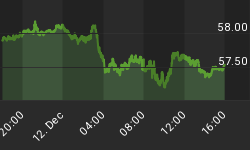Tweets from @inflation_guy on the CPI release, and added detail:
- Core CPI was +0.24%, barely missing an +0.3% print (interestingly, Bloomberg no longer calculates beyond the 1st decimal).
- Y/Y core 2.31%, which is "as expected"...except that economists were looking for a round UP to 2.3%.
- Core ex-housing is no longer as important as it was...since housing is close to fair now...but it's 2.36% y/y.
- ...that's actually the highest Core CPI y/y print yet. We've had 2.3%, 2.2%, 2.3% and 2.3%, but the first two 2.3% were up-rounders.
- ...and means 17 of last 18 months we've seen y/y core CPI increase.
- Accelerating groups: Apparel, Educ/Comm, Other (15.4%). Decelerating: Food/Bev, Transport, Recreation (37.4%). Unch: Med Care, Housing
The hurdle next month to push year-on-year core CPI higher for the 18th of the last 19th months is challenging. In May 2011, core CPI threw the highest print since 2008: +0.252% (rounded to +0.3%). That being said, this month's print was the third-highest since 2008, so it's not a complete reach.
Some observers will focus on the last 3 months of core CPI, which were +0.098%, +0.230%, and +0.242%, projecting to a relatively-calming 2.3% annualized - which is what it appears we've done, stabilize right on the Fed's target. But it appears the February number was the aberration. Annualizing the last four months would give us 2.4% (January's change was +0.218%), and annualizing just these last two months gives us 2.8%. I don't recommend playing around too much with annualization, but I point this out because popular opinion will try and pretend the +0.098% was wasn't an outlier.
Another way you can get a sense for the acceleration of inflation, and the easy potential for further inflation, is to look at the median monthly print and annualize. (This isn't the same as the Cleveland Fed's "Median CPI" - that indicator is looking at the median one-month change of all of the goods and services prices collected by the BLS.) What I am doing in the chart below is looking at the median month-on-month print from the last 12 monthly releases, and annualizing that figure. You can see that the number no longer looks like it has leveled off.

What that suggests is that the recent failure of inflation to continue rising on a year-on-year basis is due to the low prints that are "tail events" on the downside, and not because the overall process of inflation has somehow been magically arrested at the Fed's target.
















